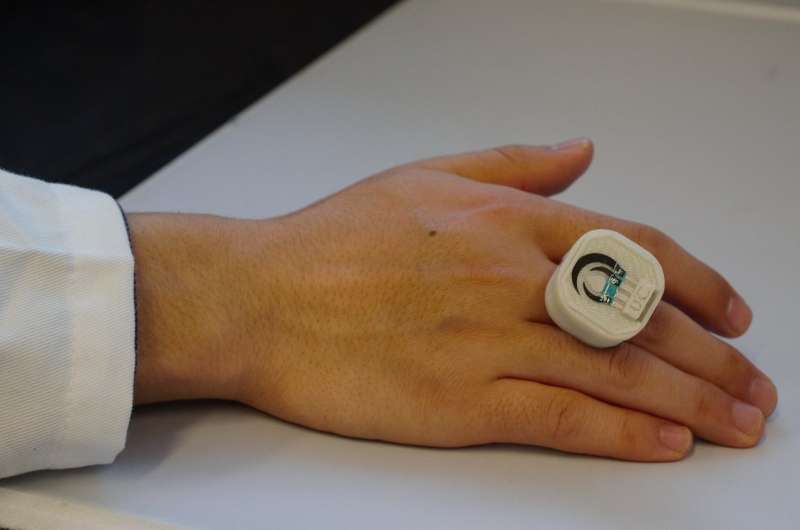A fashionable chemical and biological threat detector-on-a-ring

Wearable sensors are revolutionizing the tech-world, capable of tracking processes in the body, such as heart rates. They're even becoming fashionable, with many of them sporting sleek, stylish designs. But wearable sensors also can have applications in detecting threats that are external to the body. Researchers now report in ACS Sensors a first-of-its kind device that can do just that. And to stay fashionable, they've designed it as a ring.
According to a global analyst firm called CCS Insight, wearable electronics will be a $34 billion industry by 2020. Wearable chemical sensors currently in development include those made in the form of tattoos, mouth guards, wristbands and headbands, but all of these types of sensors face challenges. For example, a sweat sensor worn on an arm could be useful, but patients would need to produce enough sweat for the device to be successful. There is a demand for sensors that are compact, affordable, noninvasive and can be incorporated into everyday life. But more advanced sensors can be costly and difficult to produce. Joseph Wang and colleagues at the University of California, San Diego wanted to develop a portable, affordable, wearable sensor that would detect external chemical threats.
The team designed their sensor as a ring that can be worn on a finger. The ring has two parts, an electrochemical sensor cap for detecting chemical and biological threats, and a circuit board under the cap for processing and sending data wirelessly to a smartphone or laptop. It can perform voltammetric and chronoamperometric measurements, which allow the ring to detect a wide array of chemical threats. The team exposed the prototype to explosives and organophosphate nerve agents, both in vapor and liquid phases. The ring was highly selective and sensitive. Although this ring-based sensor was designed to detect explosives and organophosphate nerve agents, the researchers say the device could be expanded to other hazardous environmental or security agents.
More information: Wearable Ring-Based Sensing Platform for Detecting Chemical Threats, ACS Sensors (2017). pubs.acs.org/doi/abs/10.1021/acssensors.7b00603
Journal information: ACS Sensors
Provided by American Chemical Society





















